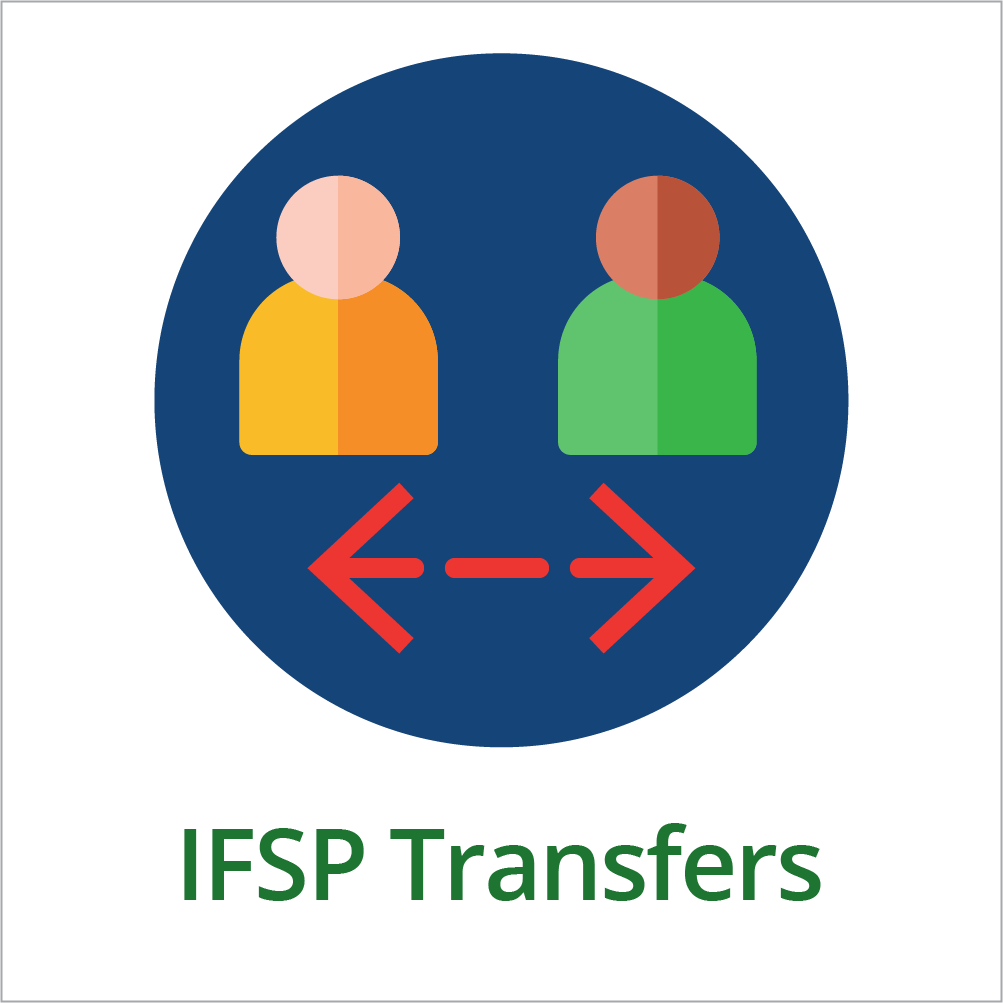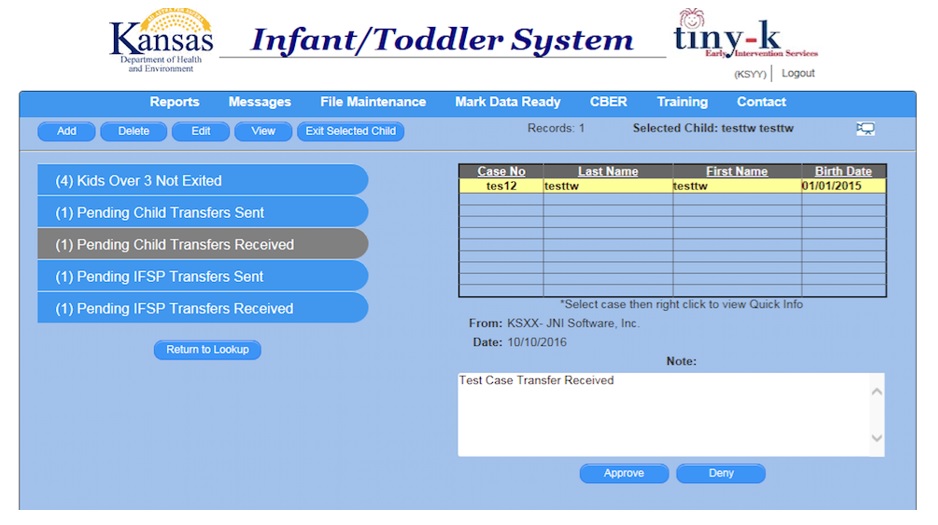
IFSP transfers refer to a data system feature that allows a child’s and family’s IFSP information to be securely sent electronically to another program. When the family of a child receiving Part C services moves or relocates to a different part of a state and wants to continue receiving services, the child’s IFSP may need to be transferred to a new local program/site. When an IFSP is online, the information can be securely transferred electronically. In transferring IFSP information, states need to consider the types and amount of IFSP data that can be electronically transferred, as well as related security and privacy issues.
Connection to DaSy Data System Framework:
- Data Governance and Management DG6: Data governance policies require the development and implementation of procedures to ensure the security of the data from breach or loss.
- Data Governance and Management DG8: Part C/Part B 619 state staff or representatives support and implement management procedures that maintain and address data security and access.
- System Design and Development SD4: The Part C/Part B 619 state data system has the capacity to support accountability, program improvement, and program operations.
Potential Data Elements
- Child ID
- IFSP date
- IFSP type (initial, update, annual, etc.)
- IFSP fields (field names will vary by state)
- Current site name/ID
- Transfer site name/ID
- Current service coordinator
- New/transfer service coordinator
Functionality
- IFSP transfer interface
- Permissions that limit and control access to the data
- Audit trail
Key Considerations
- Decide whether the sending site can restrict the type/amount of information that is transferred. For example, the site can send all IFSPs in the child’s record, only the current IFSP, or maybe only certain fields or parts of the IFSP.
- It may be important to limit the staff/roles that will have access/permission to transfer a record. The program should decide who has permissions to initiate the transfer from the sending site and who is allowed to accept or approve the transfer at the receiving site.
- The ability to communicate about the transfer between the sites is important so that both sites are working together on the transfer.
- Determine whether the receiving site has the ability to approve/deny the transfer in the data system. If a transfer is denied, a process should be in place to communicate the reason why.
- Both the sending site and receiving site should decide on the period of time in which the transfer must be completed. This will help to ensure that the most recent data are included in the transfer.
- A mechanism should exist, either within or outside the data system, to verify the child’s identity at both the sending and receiving sites/programs.
- Decide whether the sending site may continue to access the child’s records after the transfer and, if so, how long that access remains.
- The system should have the capability to create an audit trail so that IFSP transfers can be tracked, including which users participated in the transfer.
State Examples
Kansas
This screenshot shows the child record with a pending transfer.

This screenshot shows that once the child record is transferred, the receiving site can request the IFSP.

- IFSP Transfer Portal Guidance. This document provides an overview of how a child record is transferred between local programs.
- IFSP Transfer Process Recommended Practices. This document provides information on best practices for transferring a child record between local programs.
Colorado
Video Demonstration
Shows the steps involved in transferring an IFSP record between two local programs.
- Colorado UNICORN Webinar presentation (see slide 3). This slide describes the process for transferring an IFSP between local programs, as demonstrated in the video above.
Related Resources
- Data Security Checklist (Privacy Technical Assistance Center, 2011)
This brief offers best practice recommendations for “developing and maintaining a successful data security program,” which includes the secure transfer of data. - DaSy Website Resource Collection: Privacy and Confidentiality
This page of the DaSy website provides resources, including federal guidance, on practices and policy regarding the privacy and confidentiality of early childhood data. - ECTA Website Resource Collection: Privacy and Data Sharing
This resource collection on the Early Childhood Technical Assistance website provides documents and links to additional information about sharing data in a secure manner.
Published June 2017.

